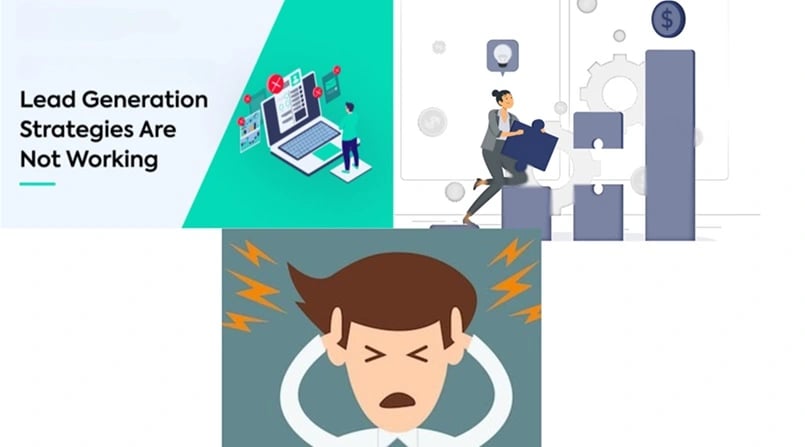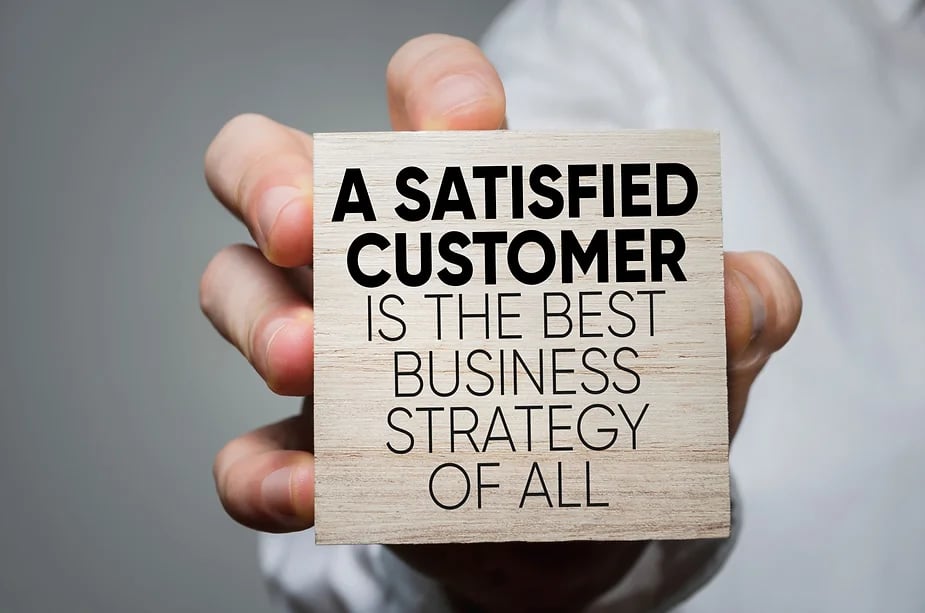
There’s nothing more frustrating than having a lead generation strategy for your business website that just isn’t bringing in the customers you need. Whether you’re missing out on leads, not converting them into sales, or your efforts are simply falling flat, it’s time to rethink your approach. In this informative blog post, we’ll examine into the reasons why your lead generation strategy may not be working as effectively as you’d like. From understanding your buyer persona to ensuring your landing page is optimized for mobile, we’ll explore key factors that could be hindering your success. Let’s dissect the challenges and provide solutions to help you design a brand strategy that attracts and converts leads successfully.
A Lead Generation Strategy Means You’re Not Shooting in the Dark
The Importance of Lead Generation
Lead generation, commonly known as lead gen, is the process your company undergoes to attract prospective customers or clients. Having a solid lead generation strategy is crucial for your sales and business development. It allows you to track how people find your site, where they’re becoming leads, and ultimately where they are converting into customers. Without a well-defined lead gen strategy, your business is at risk of lost revenue and missed opportunities to engage with potential clients.
The Risks of Not Having a Lead Gen Strategy
Not having a lead generation strategy in place leaves your business vulnerable to missed opportunities and inefficient marketing efforts. Without a clear strategy, your marketing activities may lack direction and fail to attract the right audience. This lack of focus can lead to decreased lead generation, ultimately impacting your sales pipeline and hindering your business growth.
By neglecting to establish a lead gen strategy, you’re imperatively shooting in the dark, hoping to stumble upon potential leads without a targeted approach. This not only wastes valuable resources but also makes it challenging to measure the effectiveness of your marketing efforts and identify areas for improvement.
8 Reasons Why Your Lead Generation Strategy Isn’t Working
You Don’t Understand Your Buyer Persona
If you’re wondering why your lead generation isn’t working, one of the first places to look is at your buyer persona. Understanding your ideal client or customer is crucial for crafting an effective lead generation strategy. When you know who is engaging with your services, you can tailor your messaging and outreach tactics to truly reach and persuade them to engage with your website or business.
The Landing Page Isn’t Doing Its Job
An ineffective landing page can be a major reason why your lead generation strategy is falling short. A landing page is where a prospect lands and makes a quick decision to engage with your services. If your landing page isn’t converting users, it could be due to poor messaging, overwhelming content, too many distracting links, or slow loading times. Fixing these issues can help create a landing page that effectively converts visitors into leads.
Understanding the importance of having a strong landing page is vital for maximizing your lead generation efforts. Working with a digital marketing agency to design a compelling and converting landing page can make a significant difference in the success of your strategy.
You Have a Weak or Non-Existent Call-to-Action
Weak or non-existent calls-to-action on your landing page can leave prospects confused and unsure about how to engage with your services. Without a clear call-to-action, users may bounce from your page and seek out your competitors. Adding concise bullet points that clearly explain the benefits of engaging with your services can help improve the effectiveness of your call-to-action.
Ensuring that your call-to-action is strong and compelling is vital for guiding users towards taking the desired action on your landing page. A well-crafted call-to-action can significantly impact the conversion rate of your lead generation strategy.
The Content Offer or Incentive Isn’t Appealing to Your Target Audience
If your landing page is well-designed, with a clear call-to-action, but still isn’t converting leads, the issue may lie with the content offer or incentive not being appealing to your target audience. As part of creating a buyer persona, you can identify the messaging and pain points that resonate best with your audience, helping you create offers or incentives that align with their needs.
Providing your target audience with valuable content in exchange for their contact information can build trust and establish a reciprocal relationship. By offering something of value, you increase the likelihood of converting leads into customers and establishing long-lasting relationships with them.
You Aren’t Nurturing the Leads
Nurturing leads is just as important as generating them. Focusing solely on lead generation without nurturing the relationship can lead to missed opportunities and impact your bottom line. Building trust and staying top of mind with prospects through lead nurturing can significantly improve the conversion rate of your leads into customers.
Using customer relationship management (CRM) tools to manage and maintain relationships with your prospects can help you stay engaged with them throughout their purchasing decision journey. By nurturing leads effectively, you increase the chances of converting them into loyal customers.
The Consequences of a Poor Lead Generation Strategy

Lost Revenue and Sales
Lead generation is the lifeblood of any business looking to drive revenue and sales. A poor lead generation strategy can result in lost revenue opportunities and decreased sales figures. Without a steady stream of leads coming in, businesses risk missing out on potential customers who could have been converted into paying clients.
Inefficient Marketing Efforts
An inefficient lead generation strategy can lead to wasted marketing efforts and resources. When a strategy is not working effectively, businesses may find themselves spending time, money, and energy on tactics that do not yield the desired results. This inefficiency can be detrimental to the overall marketing approach and hinder the growth of the business.
Crafting a Buyer Persona
For a successful lead generation strategy, understanding your ideal client or customer is crucial. This process involves creating a detailed buyer persona that includes both demographic and psychographic data. The demographic data provides insights into the age, gender, and income of your target audience, while the psychographic data explores into their behaviors, purchasing decisions, and motivations.
Understanding Demographic and Psychographic Data
To tailor your marketing messaging effectively, it’s imperative to understand the demographic and psychographic data of your ideal client. By analyzing these aspects, you can create targeted campaigns that resonate with your audience, leading to higher lead conversion rates and overall business success.
Creating a Detailed Description of Your Ideal Client

On top of demographic and psychographic data, creating a detailed description of your ideal client helps in crafting a buyer persona that guides your lead generation strategy. This includes understanding their pain points, preferences, and what drives them to make purchasing decisions. By mapping out a comprehensive profile of your ideal client, you can create content and campaigns that speak directly to their needs and interests, increasing the likelihood of converting leads into customers.
Creating an Effective Landing Page
Not sure why your lead generation strategy isn’t performing as expected? Check out reasons your Lead Generation Strategy is Not Working for insights. Let’s look into creating an effective landing page.
Clear Messaging and Design
On your landing page, it’s crucial to have clear messaging that directly speaks to your target audience. Confusing or vague language can deter potential customers from taking action. Pair your messaging with a visually appealing design to create a seamless user experience.
Concise Content and Minimal Distractions
On your landing page, make sure your content is concise and to the point. Avoid overwhelming visitors with an excess of information or distractions. Keep the focus on the key benefits of your product or service to capture the attention of potential leads.
Another important aspect to consider is the use of imagery and graphics that complement your message without overpowering it. Striking the right balance between visuals and text can enhance the overall appeal of your landing page and improve conversion rates.
A Strong Call-to-Action
Landing pages should have a strong and compelling call-to-action (CTA) that guides visitors on what to do next. Whether it’s prompting them to sign up for a newsletter, download a guide, or request a consultation, the CTA should be clear, concise, and persuasive. Make it easy for customers to take the desired action by placing the CTA prominently on the page.
Concise and impactful CTAs can significantly increase the effectiveness of your landing page and drive conversions. A well-crafted CTA acts as a guiding beacon for visitors, directing them towards the next steps in the customer journey.
Nurturing Leads and Building Relationships
The Importance of Lead Nurturing
Keeping your business top of mind with potential customers is crucial for converting leads into customers. Lead nurturing is an vital part of the sales process, as it involves building relationships with prospects who may not be ready to make a purchase immediately. By nurturing leads, you can maintain communication, provide valuable information, and establish trust, increasing the likelihood of a successful conversion down the line.
Using a CRM to Manage Relationships
Managing relationships with leads efficiently is key to successful lead nurturing. Utilizing a Customer Relationship Management (CRM) system can streamline the process by helping you organize, track, and follow up with leads effectively. A CRM allows you to keep detailed records of interactions, set reminders for follow-ups, and personalize communication based on lead behavior and preferences.
With a CRM, you can segment your leads, automate certain communication efforts, and ensure that no valuable prospect falls through the cracks. By leveraging CRM functionalities, you can tailor your approach to each lead and maximize the chances of turning them into loyal customers.
Staying Top of Mind Without Being Overbearing
Without bombarding leads with constant messaging, staying top of mind is vital in lead nurturing. By providing valuable content, relevant updates, and occasional touchpoints, you can keep your business on the radar without overwhelming potential customers. Creating a balance between staying engaged and not being intrusive is key to building lasting relationships with leads.
Summing up
Presently, having a lead generation strategy that isn’t working can be detrimental to your website, business, and overall success in attracting customers and leads. By following the informative and educational advice outlined in this article, you can identify the reasons why your strategy may not be yielding the desired results and take actionable steps to rectify the situation. Whether it’s understanding your buyer persona, optimizing your landing page, creating compelling calls-to-action, nurturing leads, or ensuring mobile-friendliness, implementing these strategies can help you design a brand that effectively attracts and converts leads for your business.











